After a month of traveling in Illinois and the Texas Panhandle, it was nice to return to our Florida home. During the week or so before we returned home, there was a fish kill. Most seemed to be Largemouth Bass, all about 12 to 16 inches in length. Their skeletons were scattered about on our back lawn at the lake’s edge. Many Black and Turkey Vultures were picking scraps of meat or just loafing about on neighbors’ rooftops.
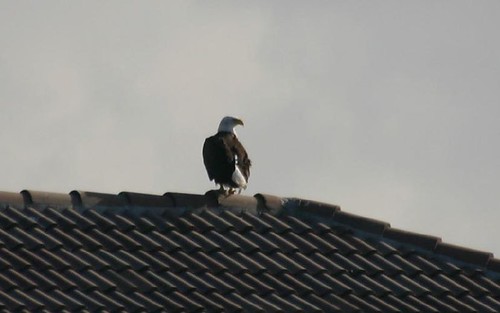
We walked to the supermarket this morning, and on the way back we saw an adult Bald Eagle sitting on a roof, about a quarter of a mile east of our home. We hurried home and I immediately ran to get my camera and drove to the location where the eagle was perched. During the winter it is not unusual for us to see Bald Eagles flying over our lake. Once I saw one attack an Osprey, in an attempt to rob it of a large fish it had just caught. However, they never landed, at least within view, so this promised to be a photo opportunity.
I drove to the spot where we had seen the bird, but it was gone. Disappointed. I returned home, with the camera still around my neck. Thinking that it might have moved to another rooftop, I opened the back patio door to look around. To my astonishment, there was a loud flap of wings and the eagle launched out from our own roof, only about 10 feet directly over my head! For a moment I forgot I had my camera. I turned it on, but it did not operate immediately. Luckily, the eagle landed on the roof of a house directly across the lake from us, perhaps 200 yards away. I took the above photo with my 300 mm lens.
I waited patiently and after about 15 minutes the eagle took flight and passed by about 100 yards to the north of our home. Neither picture is very good, but it was a thrill just to document one of our “yard birds.”
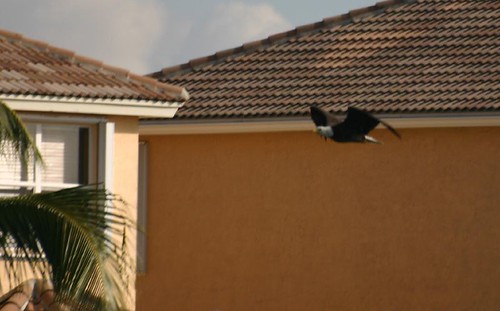
I captured these images in a small lake near Baptist-Saint Anthony Hospital in Amarillo, where we took the grandchildren to feed the waterfowl. Also photographed a Black-crowned Night-Heron at close range, but auto-focused on the nearer branches!
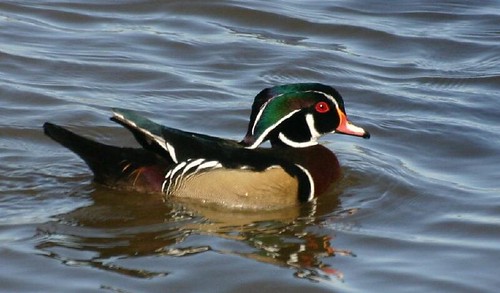
Wood Duck Drake, perhaps our most handsome North American bird.
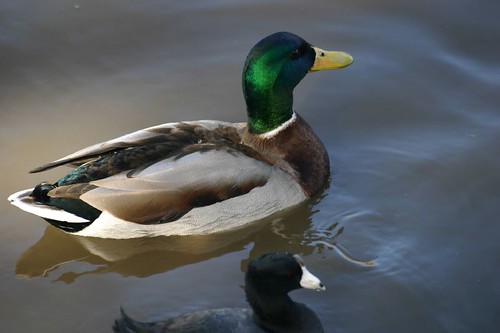
Common, but uncommonly beautiful, a Mallard Drake
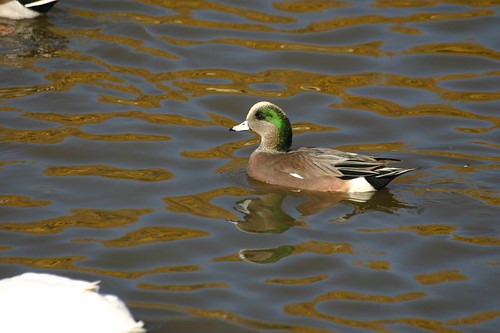
American Widgeon, with reflection from lingering fall colors of the Cottonwoods.
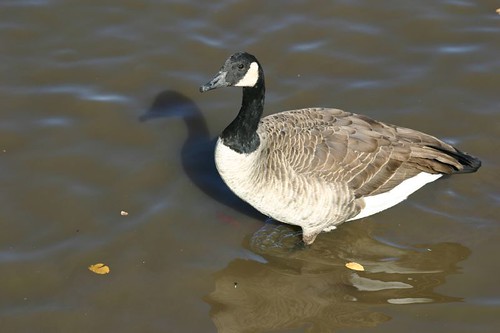
Fairly typical Canada Goose

Judging by their relatively small size, short neck and bills, this group appears to be Cackling Geese
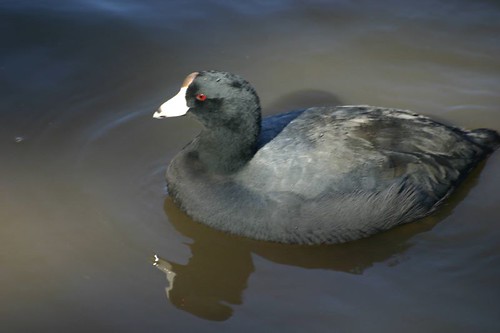
A red-eyed, white-billed American Coot
Palo Duro Canyon State Park is quite near our Panhandle grandchildrens’ home in Canyon, Texas. While awaiting the arrival of their sister (our eighth grandchild, who will join two brothers and two sisters, respectively 12, 10, 6 and 2 years old), we trekked with the older three along a creek in the canyon under a warm November sun.

The second largest canyon in the United States, Palo Duro is about 120 miles long and 600 to 800 feet deep. It is quite young, having been carved out of the Southern High Plains by the Prairie Dog Town Fork of the Red River only about a million years ago, exposing 250 million years of geologic history. A prominent feature is the Lighthouse hoodoo, the formation pictured here:
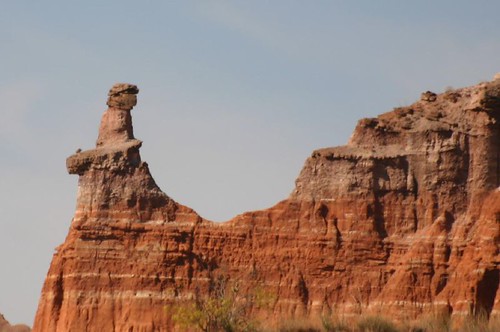
We saw several beautiful Golden-fronted Woodpeckers in the mesquite groves. My own photograph turned out poorly, so here is a link to a professional image from the Smithsonian Institution:

We came across some white spots on cactus leaves. They provided a learning opportunity for the children.
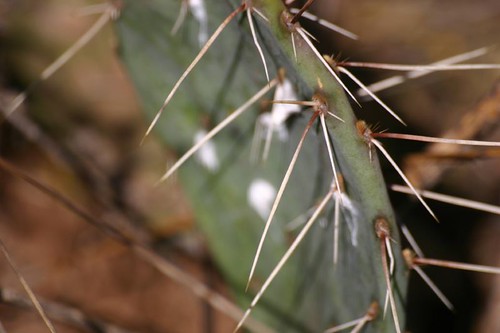
Partly visible in one of the frothy white spots was an adult cochineal beetle. “What was the first item of commerce to be exported from the New World to the old? No, not corn. Not rubber. It was bug juice. At least in a manner of speaking. When Hernan Cortez came to America in 1518 he was intrigued by the beautifully coloured Aztec fabrics, particularly the stunning reds. He asked the natives about the source of the colorant and was shown some specks on a cactus plant. Closer scrutiny revealed that the little specks were actually little bugs.” (Canadian Chemical News)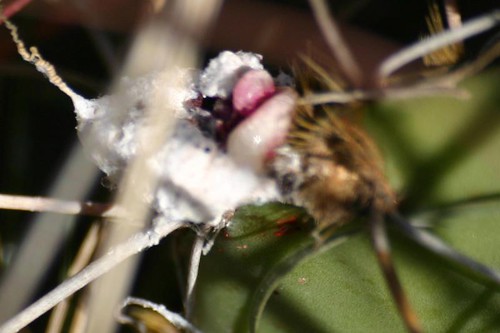
I squashed one of the white spots on my finger, and the kids grossed out, thinking I was bleeding. They were interested to learn that dye from the same source was used in Betsy Ross’ first flag and the famous jackets of the Colonial British Army Redcoats. I explained why the red fruity aid that I drank as a Boy Scout was called “bug juice.”
“Food makers might not want you to dwell on this, but the ingredient that gives Dannon Boysenberry yogurt and Tropicana Ruby Red Grapefruit juice their distinctive colors comes from crushed female cochineal beetles. The federal Food and Drug Administration is proposing new food- labeling requirements making it mandatory to disclose when a food contains beetle-derived colorings including vivid-red “carmine” and bright-orange “cochineal” (pronounced coach-in-EEL).” (Chicago Sun-Times)

This Beaver stump looked quite old, and we found no fresh evidence of beavers during our hike.
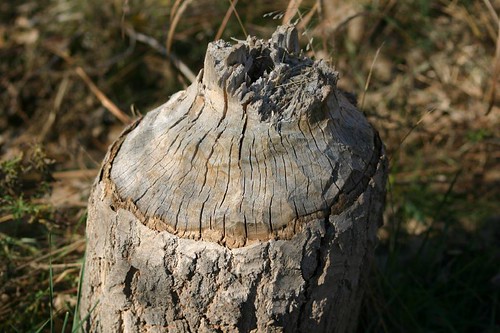
This Chinaberry tree fruits contrasted with the deep blue sky. Their beauty belies the fact that its berries, and indeed all parts of this exotic and invasive tree are quite poisonous.













